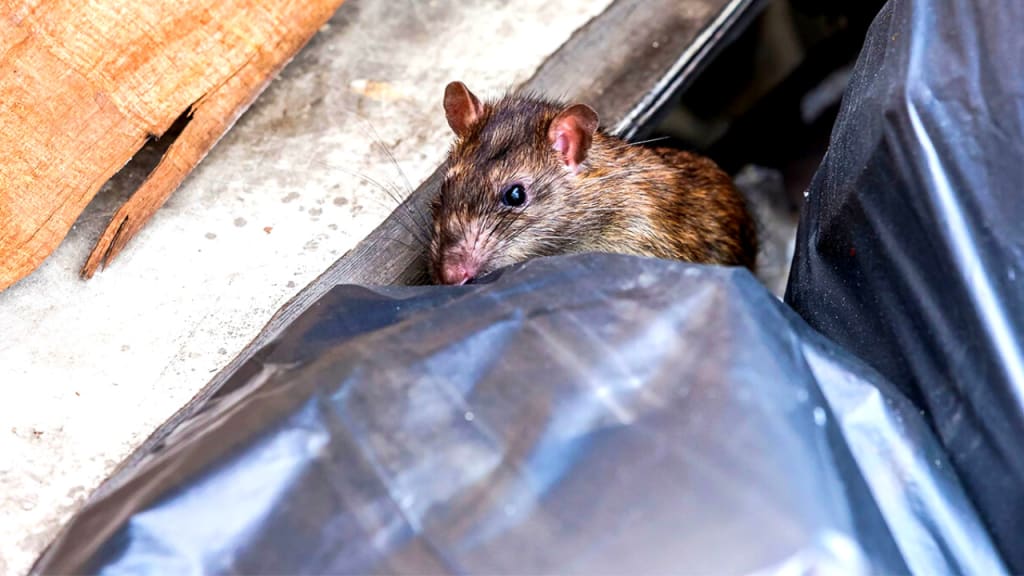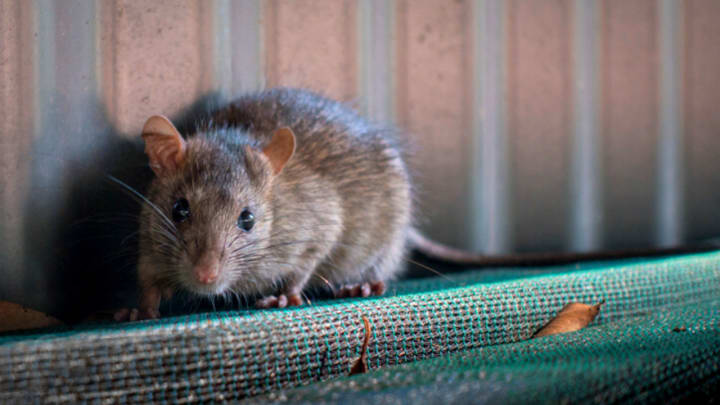How To Get Rid of Rats in Your Garage
How to protect your garage from these pesky rodents?

What's that scratching noise in your garage? Could it be a rat? Rats can make a big mess and they can be dangerous, so it's important to get rid of them as soon as possible.
Fortunately, there are ways to get rid of rats in the garage. In this blog post, we will discuss some of the best ways to get rid of these pesky critters. Stay tuned!
Why Garage?
It's crucial to understand what causes rats to congregate in your garage. It's critical to comprehend the primary aspects that draw them to your home in order to aid prevent them from returning. Rats commonly enter your garage for the reasons listed below:
1. Food
Rats are attracted to your garage because it's a potential source of food. If you store any food in your garage, rats will be able to smell it and will be drawn to the area. Additionally, if you have any pet food stored in your garage, rats will be attracted to that as well.
2. Shelter
Another reason why rats may be attracted to your garage is that it provides them with shelter. The garage can be dark and humid, which creates the perfect environment for rats to nest. Additionally, if there are any cracks or holes in your garage, rats will be able to easily access the area and make themselves at home.
3. Warmth
In the winter, rats are looking for warm places to stay and your garage may be just the place they're looking for. If you have any heat sources in your garage, such as a furnace or water heater, rats will be attracted to the area in order to keep warm. Additionally, if your garage is attached to your house, rats may be able to access the area through cracks and holes in the walls.
4. Mate
If you have a rat problem in your garage, it's likely that there are already several rats living in the area. These rats will be looking for mates and will reproduce quickly, leading to an even bigger rat problem.
5. Easy meal
If you have any insects or other small animals living in your garage, rats will be attracted to the area in order to eat them. Insects and small animals are an easy meal for rats and they will oftentimes take advantage of this food source.
6. Previous Infestations
Past infestations may have left behind nesting material. The smell of old residue is a major draw for fresh rats.

How Do You Know That You Have Rats in Your Garage?
1. You Hear Scratching Sounds in the Walls or Ceiling
If you start to hear scratching sounds coming from your walls or ceiling, it's a pretty good indicator that you have rats in your garage. Rats are nocturnal creatures, so the scratching sounds are likely to be most audible at night. If you're unsure whether the noise is coming from rats or some other type of animal, try setting up a camera in your garage to see if you can catch them in the act.
2. You See Rat Droppings Around the Garage
Another telltale sign of rats in your garage is the presence of rat droppings. Rat droppings are small and dark, and they tend to be found in clusters. If you see rat droppings around your garage, it's a good indication that there are rats present.
3. You Smell a Musty Odor
If your garage starts to smell musty, it could be due to the presence of rats. Rats produce strong-smelling urine that can make an area smell musty. If you notice a musty odor in your garage, be on the lookout for other signs of rats.
4. You See Rat Tracks in the Dust
If you have rats in your garage, you may start to see their tracks in the dust on the floor. Rat tracks look like small footprints with five toes on each foot. If you see tracks that look like this, it's a good indication that you have rats in your garage.
5. You See Dead Rats
Perhaps the most obvious sign that you have rats in your garage is if you actually see dead rats. If you find dead rats in your garage, it's a good idea to call an exterminator to get rid of the live ones before they cause any more damage.

How To Get Rid of Rats in Your Garage
Make Your Garage Less Desirable
Start by putting all powdered or food-related goods, such as dog or cat food, bird seed, grass seeds, and other items, into sealable plastic containers. A tightly fitted plastic container must also be used to keep any additional things that are being kept in a cardboard box.
The cardboard box material will still be sought after by the rat even if the contents are undesirable since it can be utilized to build a nest or to sharpen incisor teeth.
Remove any stacked things from storage and empty any pet food bowls that are kept in the garage into an outdoor trash can to keep the space tidy. The rodents can move undetectedly if there are items heaped in mounds, stowed against the wall, or touching the ground.
Placing goods on a shelf will lift them off the floor and away from the wall. The more exposed places you have in your garage, the fewer pathways rodents will utilize to get around and the less likely they are to go foraging.
If you store firewood in your garage, it must be stacked on shelves or kept outside at least a few feet from the house's foundation.
Remove any food or plant residues from your car or any other storage apparatus. Vacuum and wipe down the dash, seats, steering wheel, floor, carpet, door sides, and cupholders after that. To prevent rodents from building nests inside the engine, you might also wish to shift the equipment or vehicle every so often.
Seal Up Any Entry Points
After cleaning your garage, walk around your house's perimeter and close any openings you may notice. Mice can squeeze through a dime-sized hole, but rats can squeeze through a quarter-sized one.
Keep the doors leading inside of your home, including the garage, closed. Make sure there are no openings or gaps around or beneath these door frames and that they are completely sealed.
The typical locations of these entry points are around window, door, and garage frames, where plumbing meets the wall, on external and interior walls, the bottom of a home's foundation, and corners of rooms.
Caulk can be used to seal these entry sites, and copper mesh can be used to fill bigger gaps that cannot be filled. We advise using copper mesh because rodents find it difficult to chew through.
Make sure your garage door forms a tight seal when it is fully closed. A door sweep or threshold will be required to close any gaps. There shouldn't be any spaces between the floor and the garage door once any of these choices has been fitted. After installing these measures, if there is still a gap, it may be necessary to replace the door.
Place Traps & Bait Stations
Once your building and garage's entry points have been addressed, start placing snap traps inside the garage and bait stations outside of the garage. The snap trap should be placed along the wall where you've seen the most rat activity. Rats are attracted to the smell of food, so be sure to place the snap traps near where you think they smell the most.
The bait stations can be placed along the perimeter of your property, near potential mouse hiding spots like bushes and trees. If you have a pet, make sure to put the bait stations high enough so that your pet can't reach them.
Conclusion
While there are plenty of methods and ways to get rid of rats in your garage, it takes a lot of work, patience, and persistence.
Because of this, the best approach to dealing with pest and rodent issues is prevention. Ensure that your property is always kept tidy and maintained, including the garage. This way you are making it less-appealing for rats, mice, and other types of rodents.






Comments
There are no comments for this story
Be the first to respond and start the conversation.